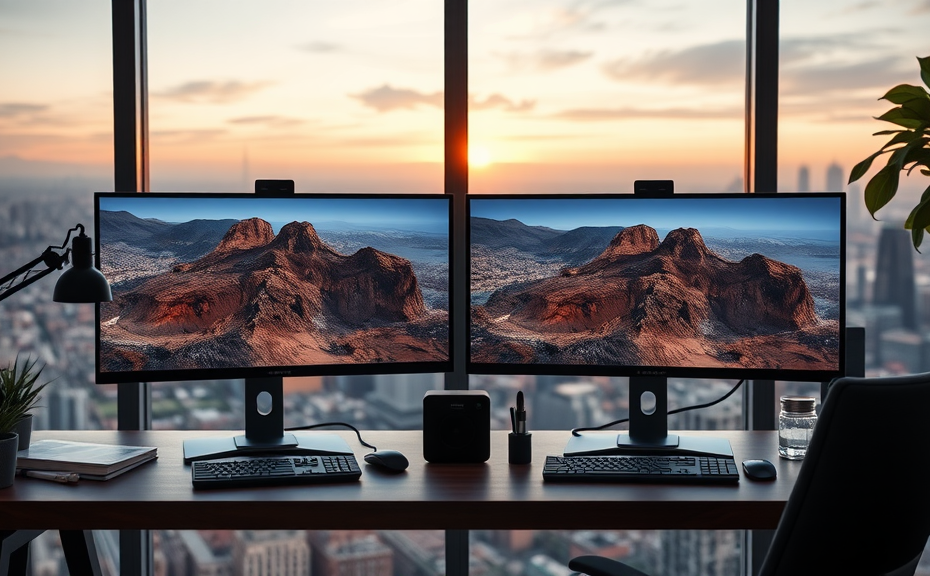In today’s fast-paced digital environment, the concept of dual monitor ergonomics has gained significant traction among professionals aiming for increased productivity and improved comfort. Setting up a dual-monitor workstation properly is essential for minimizing strain and maximizing efficiency.
One of the primary goals of dual monitor ergonomics is to create a seamless workspace that minimizes neck and eye strain. Here are some key considerations for achieving optimal ergonomics:
- Monitor Height: Position the top of each monitor at or just below eye level. This helps keep your neck in a neutral position, preventing discomfort.
- Distance: Maintain an arm’s length distance between your eyes and the screens. This distance reduces eye fatigue and creates a comfortable viewing experience.
- Angle: Adjust the angle of the monitors slightly backward. A tilt of about 10 to 20 degrees can reduce glare and facilitate a more natural line of sight.
- Alignment: Ensure both monitors are aligned at the same height to prevent awkward head movements. Using a monitor stand or adjustable arms can greatly aid in this regard.
Another critical aspect of dual monitor ergonomics involves the keyboard and mouse. Keeping these peripherals at the same level encourages a natural arm and wrist positioning. Ideally, your elbows should hug your sides and form a 90-degree angle at the wrists while typing.
Incorporating dual monitor ergonomics not only enhances comfort but also significantly boosts productivity. By ensuring your workspace is set up correctly, you can reduce the risk of repetitive strain injuries while enhancing efficiency and focus. Proper ergonomics empower you to tackle digital tasks effectively, making it an essential consideration for anyone relying on multiple screens for work.
